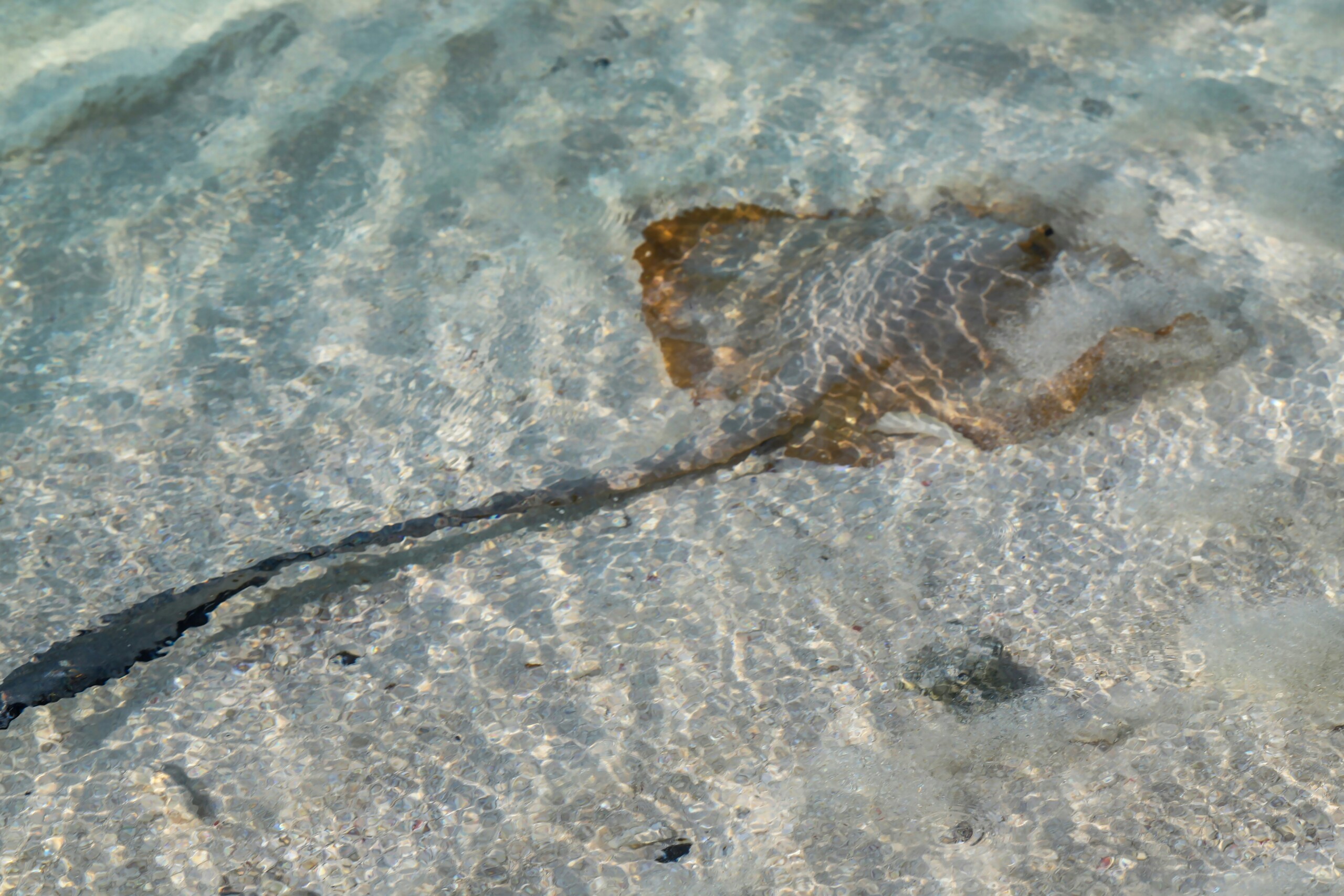As surfers, we’re no strangers to the wonders and occasional hazards of the ocean. While gliding through the waves, encountering marine life like stingrays is part of the experience. However, a stingray sting can quickly turn a blissful surf session into a painful ordeal. At San Diego Surf School, your safety and well-being are our top priorities. That’s why we’ve put together this guide on how to treat stingray stings, ensuring that you’re prepared to handle any unexpected encounters while enjoying your surfing adventures in San Diego.
Understanding StingRay Stings:
Sting rays are common inhabitants of the waters along the San Diego coastline. Typically docile creatures, they spend much of their time buried in the sand, camouflaged and out of sight. However, if stepped on or threatened, a sting ray may defensively deploy its barbed tail, resulting in a painful sting. The venom delivered by the sting ray’s barb can cause intense pain, swelling, and sometimes even more serious complications if not promptly treated.
Immediate Steps:
If you’ve been stung by a stingray, it’s essential to act quickly to minimize pain and prevent further complications. Here’s what to do:
- Exit the Water: If stung while surfing, calmly make your way out of the water to avoid any additional stings or injuries.
- Clean the Wound: Rinse the affected area with seawater to remove any sand, debris, or venom from the sting.
- Apply Heat: Immerse the affected area in hot water (as hot as can be tolerated without scalding) for 30 to 90 minutes. The heat helps to neutralize the venom and alleviate pain.
- Seek Medical Attention: Even if the pain subsides after applying heat, it’s crucial to seek medical evaluation to ensure proper wound care and monitor for any potential complications, such as infection.
Prevention Tips:
While stingray encounters are largely unavoidable in the ocean, there are steps you can take to minimize the risk of stings:
- Shuffling Feet: When entering and exiting the water, shuffle your feet along the ocean floor rather than taking large steps. This motion alerts sting rays to your presence and gives them the opportunity to swim away without feeling threatened.
- Avoid Disturbing Sand: Be mindful of where you step while walking in shallow waters, as sting rays may be buried beneath the sand. Avoid disturbing sandy areas unnecessarily to minimize the risk of stepping on a stingray.
- Stay Alert: Keep an eye out for the telltale signs of stingrays, such as their distinctive shape or the presence of small depressions in the sand, known as “stingray shuffle” spots.
Encountering a sting ray while surfing can be a painful experience. Knowing how to properly treat a stingray sting can make all the difference in your recovery. At San Diego Surf School, we prioritize your safety and provide comprehensive surf lessons that include guidance on ocean awareness and first aid. By following the tips outlined in this guide, you can surf with confidence, knowing that you’re equipped to handle any challenges the ocean may present.











